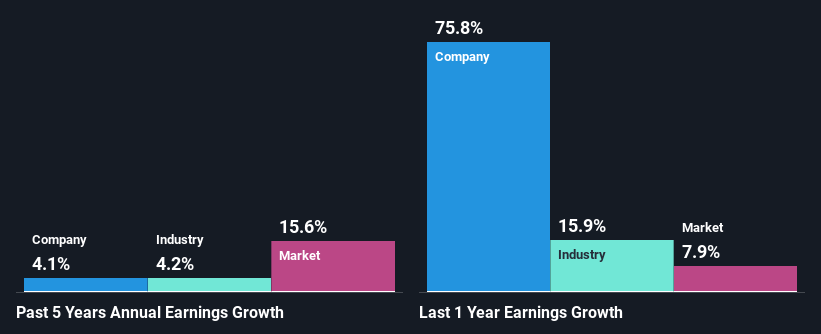BorgWarner’s (NYSE:BWA) stock is up by a considerable 16% over the past three months. Given that the market rewards strong financials in the long-term, we wonder if that is the case in this instance. In this article, we decided to focus on BorgWarner’s ROE.
Return on equity or ROE is a key measure used to assess how efficiently a company’s management is utilizing the company’s capital. Put another way, it reveals the company’s success at turning shareholder investments into profits.
Check out our latest analysis for BorgWarner
How Do You Calculate Return On Equity?
ROE can be calculated by using the formula:
Return on Equity = Net Profit (from continuing operations) ÷ Shareholders’ Equity
So, based on the above formula, the ROE for BorgWarner is:
14% = US$1.0b ÷ US$7.5b (Based on the trailing twelve months to December 2022).
The ‘return’ is the amount earned after tax over the last twelve months. That means that for every $1 worth of shareholders’ equity, the company generated $0.14 in profit.
What Has ROE Got To Do With Earnings Growth?
We have already established that ROE serves as an efficient profit-generating gauge for a company’s future earnings. Based on how much of its profits the company chooses to reinvest or “retain”, we are then able to evaluate a company’s future ability to generate profits. Assuming all else is equal, companies that have both a higher return on equity and higher profit retention are usually the ones that have a higher growth rate when compared to companies that don’t have the same features.
BorgWarner’s Earnings Growth And 14% ROE
To begin with, BorgWarner seems to have a respectable ROE. Further, the company’s ROE is similar to the industry average of 14%. BorgWarner’s decent returns aren’t reflected in BorgWarner’smediocre five year net income growth average of 4.1%. We reckon that a low growth, when returns are moderate could be the result of certain circumstances like low earnings retention or poor allocation of capital.
We then performed a comparison between BorgWarner’s net income growth with the industry, which revealed that the company’s growth is similar to the average industry growth of 4.2% in the same period.
Earnings growth is an important metric to consider when valuing a stock. It’s important for an investor to know whether the market has priced in the company’s expected earnings growth (or decline). This then helps them determine if the stock is placed for a bright or bleak future. If you’re wondering about BorgWarner’s’s valuation, check out this gauge of its price-to-earnings ratio, as compared to its industry.
Is BorgWarner Efficiently Re-investing Its Profits?
BorgWarner has a low three-year median payout ratio of 24% (meaning, the company keeps the remaining 76% of profits) which means that the company is retaining more of its earnings. However, the low earnings growth number doesn’t reflect this as high growth usually follows high profit retention. So there could be some other explanation in that regard. For instance, the company’s business may be deteriorating.
Additionally, BorgWarner has paid dividends over a period of at least ten years, which means that the company’s management is determined to pay dividends even if it means little to no earnings growth. Upon studying the latest analysts’ consensus data, we found that the company’s future payout ratio is expected to drop to 12% over the next three years. Regardless, the ROE is not expected to change much for the company despite the lower expected payout ratio.
Conclusion
In total, we are pretty happy with BorgWarner’s performance. In particular, it’s great to see that the company is investing heavily into its business and along with a high rate of return, that has resulted in a respectable growth in its earnings. Having said that, looking at the current analyst estimates, we found that the company’s earnings are expected to gain momentum. To know more about the company’s future earnings growth forecasts take a look at this free report on analyst forecasts for the company to find out more.
Have feedback on this article? Concerned about the content? Get in touch with us directly. Alternatively, email editorial-team (at) simplywallst.com.
This article by Simply Wall St is general in nature. We provide commentary based on historical data and analyst forecasts only using an unbiased methodology and our articles are not intended to be financial advice. It does not constitute a recommendation to buy or sell any stock, and does not take account of your objectives, or your financial situation. We aim to bring you long-term focused analysis driven by fundamental data. Note that our analysis may not factor in the latest price-sensitive company announcements or qualitative material. Simply Wall St has no position in any stocks mentioned.
Join A Paid User Research Session
You’ll receive a US$30 Amazon Gift card for 1 hour of your time while helping us build better investing tools for the individual investors like yourself. Sign up here
